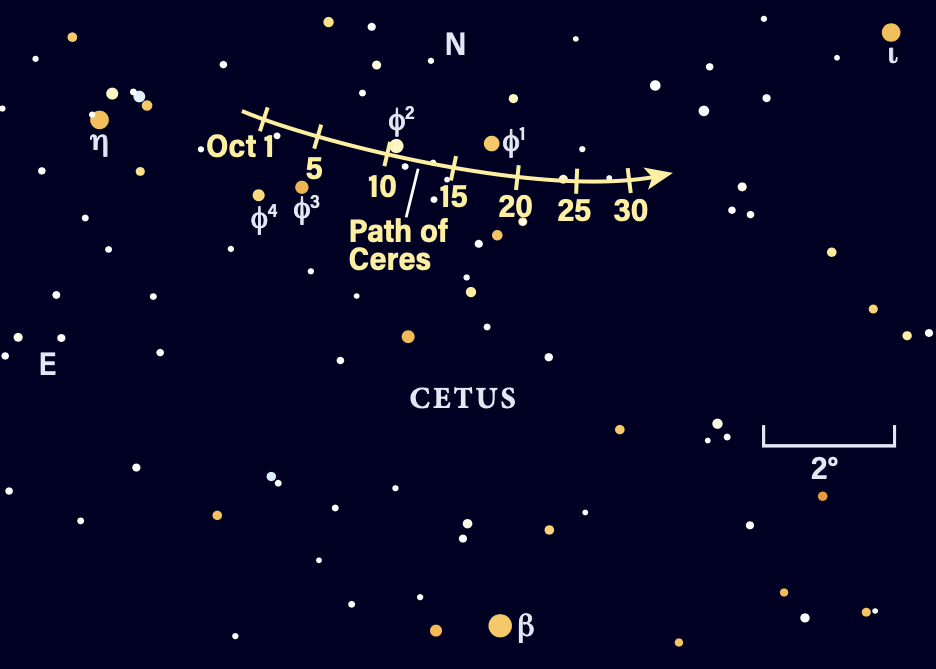Back to Article List
Now at opposition, the largest body in the main belt is passing through Cetus’ east-west line of four Phi stars, just north of Diphda.

Ceres spends all month within a short distance of several bright stars, aiding in its identification. Credit: Astronomy: Roen Kelly
Let’s peer into Cetus the Whale to spot 1 Ceres this evening, one day past opposition and glowing at magnitude 7.6, within the reach of binoculars or any small scope.
Ceres is carving a slow path north of Diphda, Cetus’ magnitude 2.0 beta star. Around 10 P.M. local daylight time, Diphda is roughly 20° high in the southeast and Ceres lies just over 8° north of this star. As you skim north of Diphda, you’ll pass a chain of four 5th- to 6th-magnitude stars, strung roughly east to west. From west to east, these are Phi1, Phi2, Phi3, and Phi4 Ceti; Ceres is now just about 1° due north of magnitude 5.4 Phi3.
You can use this same string of stars to chart Ceres’ movement throughout the month, as it passes close to Phi2 on the 10th and hangs due south of Phi1 on the 18th.
Sunrise: 6:59 A.M.
Sunset: 6:38 P.M.
Moonrise: 5:00 P.M.
Moonset: 2:40 A.M.
Moon Phase: Waxing gibbous (85%)
*Times for sunrise, sunset, moonrise, and moonset are given in local time from 40° N 90° W. The Moon’s illumination is given at 12 P.M. local time from the same location.
For a look ahead at more upcoming sky events, check out our full Sky This Week column.
